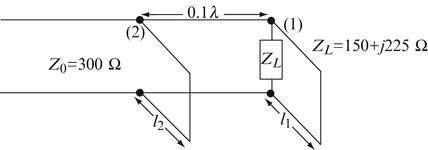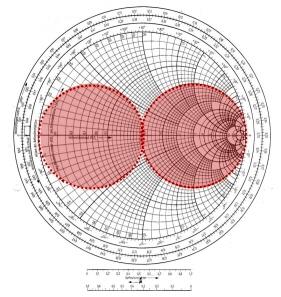

Use the Smith chart to find the normalized load impedance corresponding to a reflection coefficient of r = 30.9. Use the Smith chart to find the position of the first voltage maximum from the load, Imar Imar - _ See the location marked 1 on the Chart on the attached scanned pages of my solution. Im(Zin) = 1Ī lossless 36-transmission line is terminated in a load with ZL=(78 + j24) 22. The points are plotted as follows: z1 2 + j z2 1.5 -j2 z3 j4 z4 3 z5 infinity z6 0 z7 1 z8 3.68 -j18S Smith Chart Thus, the first step in analyzing a transmission line is to locate the normalized load impedance on the chart Next, a circle is drawn that represents the reflection coefficient or SWR. The first step is to normalize the impedance: V Å L < Å < 4 L 40 E F70 100 0.4 E F0.7 This number can be plotted on the Smith Chart. Smith Chart 2 To move along line 1, we need to normalize with respect to Z01. The Smith chart is commonly used to display the relationship between a reflection coefficient, typically given as S11 or S22, and a normalized impedance.


To understand how that works, first review. Im(2L) = _12Ī 73 lossless line is 0.6) long, If S = 1.4 and Or = -47°, use the Smith chart to find the input impedance Zin, which includes both the transmission line and the load. Smith charts can help you determine input impedances as well as relate load impedances to the reflection coefficient. Transcribed image text: Use the Smith chart to find the normalized load impedance corresponding to a reflection coefficient of T = 0.7237.


 0 kommentar(er)
0 kommentar(er)
